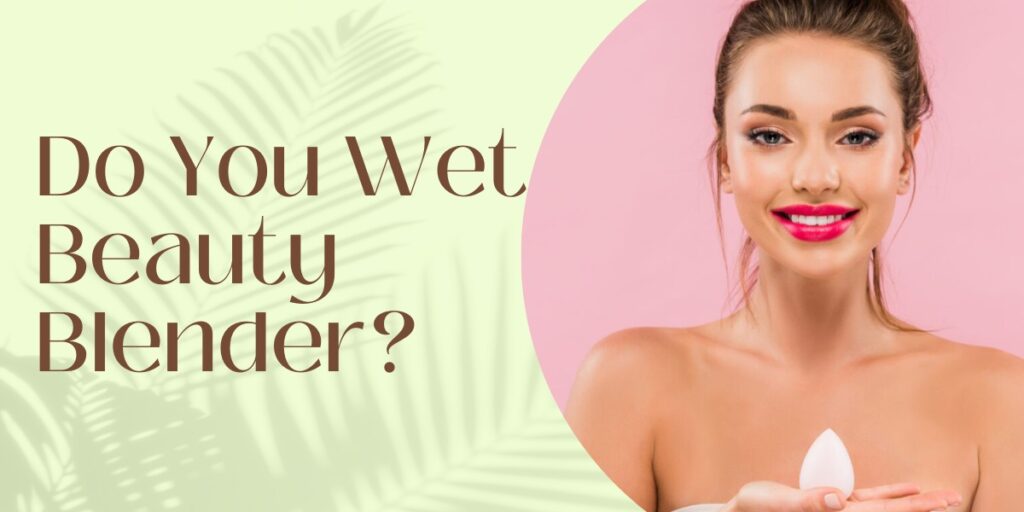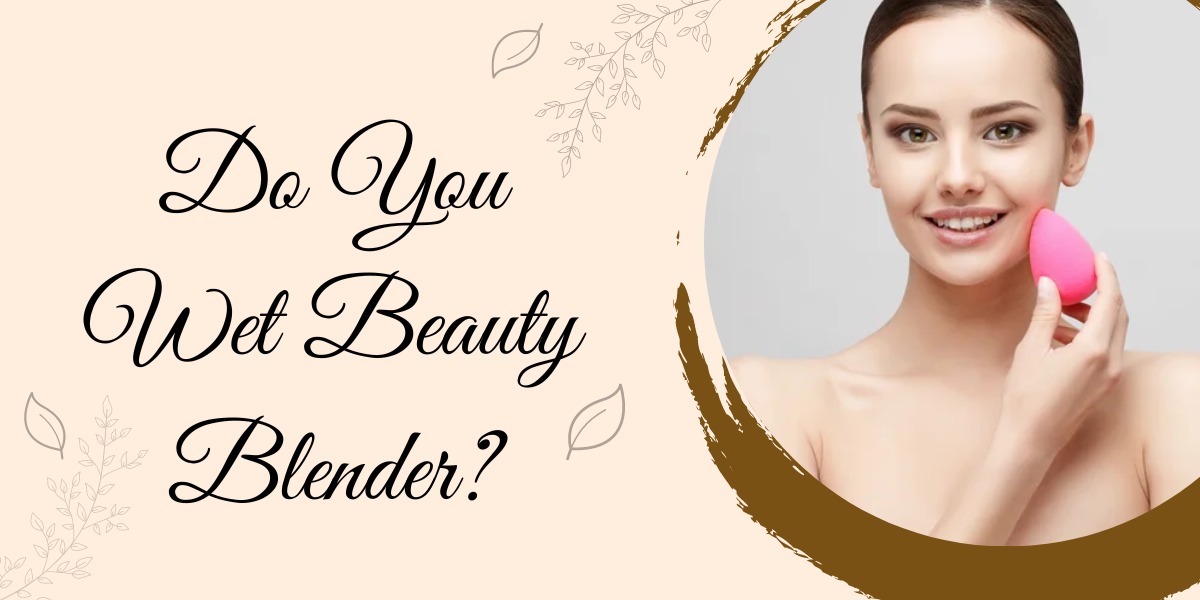When it comes to applying makeup flawlessly, a beauty blender is an indispensable tool for makeup enthusiasts. It is a versatile sponge that helps you achieve an airbrushed finish with minimal effort. However, there is an ongoing debate about whether to wet your beauty blender or not. Some people swear by the benefits of a damp beauty blender, while others argue that using it dry is better. In this article, we will explore both sides of the argument and help you decide whether you should wet your beauty blender or not.

What is a Beauty Blender?
A beauty blender is a makeup sponge that is used to apply and blend foundation, concealer, and other makeup products. It is made of a latex-free foam material that is soft and bouncy. A beauty blender is shaped like an egg and has a pointed tip and a round base. The pointed tip is used to reach small areas such as the corners of the eyes and the nose, while the round base is used to apply foundation to larger areas such as the cheeks and forehead.
Benefits of Wetting Your Beauty Blender:
- Blends Makeup More Effortlessly
Wetting your beauty blender before use can make the application process more effortless. When the sponge is damp, it expands and becomes softer, making it easier to blend the makeup into the skin. A damp beauty blender also prevents the foundation from settling into fine lines and creases, resulting in a more natural and flawless finish.
- Provides a Dewy Finish
Wetting your beauty blender can give you a dewy finish that is coveted by many. A damp sponge picks up less product and distributes it evenly, resulting in a sheerer and more natural finish. This is especially beneficial for those who prefer a more natural look or have dry skin.
- Saves Makeup Product
A damp beauty blender uses less makeup product compared to a dry one. When you wet your beauty blender, it absorbs water and expands, leaving less room for the makeup to seep in. This means that you use less product, and your makeup lasts longer.
Drawbacks of Wetting Your Beauty Blender:
- Takes More Time
Wetting your beauty blender requires a few extra steps, which can be time-consuming. You need to wet the sponge, squeeze out excess water, and then apply the makeup. This can be tedious, especially if you are in a hurry.
- Can Harbor Bacteria
A damp beauty blender can harbor bacteria if not cleaned properly. Moisture is an ideal breeding ground for bacteria, and if you don’t clean your beauty blender regularly, it can lead to breakouts and skin infections.
- Not Suitable for All Skin Types
Wetting your beauty blender may not be suitable for all skin types. If you have oily or acne-prone skin, using a damp sponge may cause the foundation to slide off and lead to breakouts.
Dry vs. Wet Beauty Blender: Which One to Choose?
The choice between a dry and a wet beauty blender depends on personal preference and skin type. If you have dry skin and prefer a natural, dewy finish, a damp beauty blender is the way to go. However, if you have oily skin or are in a hurry, a dry beauty blender may be more suitable.
How to Wet Your Beauty Blender?
If you decide to wet your beauty blender, here’s how to do it:
- Run the sponge under water until it is completely saturated.
- Squeeze out the excess water until the sponge is damp but not dripping.
- Use a towel to gently pat the sponge to remove any excess water.
- Apply your makeup product onto the sponge and blend onto your face using a bouncing motion.
- Clean your beauty blender after each use to prevent bacteria buildup.
How to Clean Your Beauty Blender?
Cleaning your beauty blender is essential to prevent bacteria buildup and maintain the longevity of the sponge. Here’s how to clean your beauty blender:
- Wet the sponge under running water.
- Apply a gentle soap or cleanser to the sponge and work it into a lather.
- Rin running water until all the soap is removed.
- Squeeze out the excess water and gently press the sponge with a towel to remove any remaining moisture.
- Leave the sponge to air dry in a well-ventilated area.
- Clean your beauty blender after each use to prevent bacteria buildup.
In conclusion, wetting your beauty blender can have several benefits, including effortless blending, a dewy finish, and saving makeup product. However, it also has drawbacks such as requiring more time, harboring bacteria, and not being suitable for all skin types. Ultimately, the choice between a dry and a wet beauty blender depends on personal preference and skin type. If you decide to wet your beauty blender, make sure to clean it regularly to prevent bacteria buildup. A well-maintained beauty blender can make a significant difference in the application and finish of your makeup, so it’s worth taking the extra time and effort to ensure that it’s clean and dampened properly.





